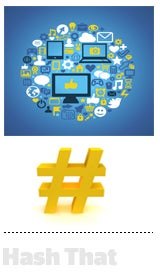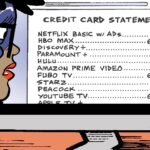 With the rise of the hashtag à la Instagram, Tumblr, Twitter and, now, Facebook, the question is, how can the classification utility be used to make sense of data from a cross-channel attribution perspective?
With the rise of the hashtag à la Instagram, Tumblr, Twitter and, now, Facebook, the question is, how can the classification utility be used to make sense of data from a cross-channel attribution perspective?
Take Pinfluencer, one of the early-ins on Pinterest analytics. Newly rebranded as Piqora, the platform has grown beyond its standard Pinterest Marketing Suite used by brands such as Sephora and Steve-Madden to include analytics for interest-based networks such as Tumblr and Instagram.
Piqora applies image-based recognition and algorithms to social networks for marketers to track trending images, hashtags and topic resonance amongst aggregate audiences — and to zero in on competitor trends. A branded hashtag like #Nike could hold very different value to marketers than a “lifestyle” hashtag like #fitness, but both could be dually beneficial to a campaign, explained Piqora’s CEO Sharad Verma.
The proliferation of the “visual” social network makes the melding of paid and earned media in these channels particularly interesting to advertisers. According to Piqora, Pinterest, which has amassed more than 10 billion pins with a revenue-to-visitor ratio of $1.47, garners strong traffic around purchase intent with an average order value of $169.
As of June, Facebook-owned Instagram counted 130 million-plus users who had uploaded more than 16 billion photos. And, Yahoo’s $1.1 billion baby, Tumblr, comes in at 80 million-plus posts per day. According to Piqora research, 11% of Pinterest pins originated on Tumblr.
All this indicates that visual networks are a landmine of data and that, increasingly, the lines will begin to blur between them as more and more crossover occurs.
And social networks alone are not the only game in town where the “hashtag” is being used to categorize and measure content reach. In addition to the social players, “there are vertical networks like Polyvore, which is extremely focused on fashion and a home décor-centric network called Houzz,” Verma said. “More and more networks are now built around hashtags for discovery.”
Piqora, used by digital agency 360i, sees a future for visual networks in the realm of paid media. All of the major social networks are making concessions or appear to be. Tumblr has launched a beta native ads program, but does not have an ads API program yet, Verma noted.
Similarly, Pinterest, which earlier this spring rolled out basic native Web analytics capabilities after introducing business accounts prior, “is experimenting with and (we believe) will eventually launch ad-sponsored pins and ultimately, an ads API,” Verma said. “If and when this does happen, we see ourselves as being a native ads DSP helping brands do coordinated paid media buys across these visual networks.”
With Instagram part of the Facebook fold and Facebook’s debut of hashtags, “people [can] consolidate [their] efforts so they can get more tracking around [topics] and it allows the user to better-broadcast what they want to say about a trend or in a conversation,” remarked Dane Atkinson, CEO of SumAll, a platform for marketers to visualize data across a multitude of channels ranging from ecommerce shopping carts to Google AdWords and Instagram.
However, he does not see a lot of moves on Instagram and Facebook’s part to bring image data together. “You can’t see patterns – like the fact that you’re reposting your Instagram images to Facebook and how an Instagram spike was shadowed hours later by a Facebook spike, “ he noted. “It’s still a bit of a fuzz box for them.”
While time will tell how Facebook’s hashtags will pan out, “from an attribution perspective, it provides more clarity around the true impact of an asset that’s been user-generated or advertiser-generated,” noted Manu Mathew, CEO of cross-channel marketing intelligence platform Visual IQ.
For a marketer, it helps answer the question of, “ how do I categorize what content people are responding to? And ultimately, how do we correlate that to [for instance] something they saw on TV? It’s a correlation component,” he said.














